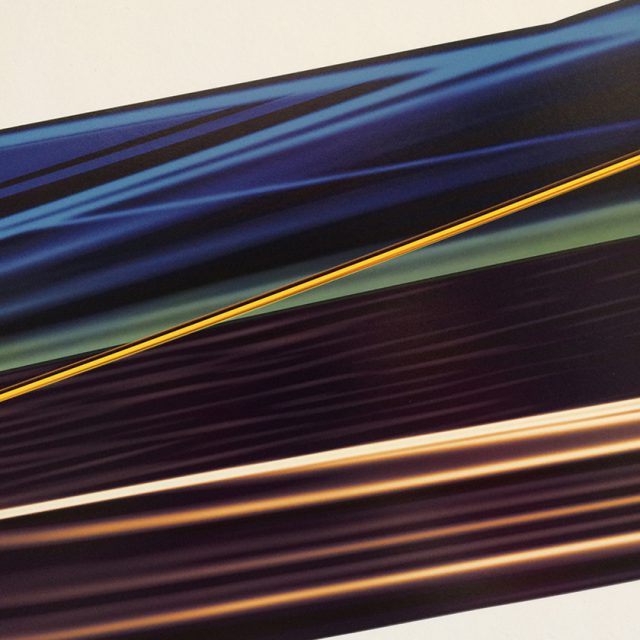Per_formare una collezione (“Per_forming a collection”) is the project (2013-in progress) devoted by the Madre to the gradual formation of its permanent collection, meant as a “per_formative” organism that explores in real time the identity and the functions of the museum. From 2016 Per un archivio dell’arte in Campania is part of this project and completes it as a progressive survey dedicated to the artistic practices active in the territory of the Campania region and in which the Madre museum operates.
The works selected in this additional chapter (many of which have been donated by artists, and entered into the collection over the last five years) deepen the nature of the museum’s collection which is aimed at exploring and triggering unorthodox energies and linguistic, disciplinary and methodological encroachments, in relation to the past and the present, tracing seminal figures in order to put them in a perspective and in dialogue with the research or with a rereading of the emerging artists.
The main guidelines that the Madre collection has taken over in recent years are thus confirmed: if, on the one hand, the collection tells the story of the avant-garde culture with reference to what happened in Naples and Campania in the last fifty years – bringing out the role of these territories as historical crossroads of the most authoritative research carried out in every field of the artistic experimentation – on the other hand it explores the present and hypothesizes the future through the inclusion of artists who respond with new works and commissions to this story.
The exhibition itinerary is not arranged according to a chronological order or following research lines or historical groupings, but organized as an open and mobile critical thematic narration, in which the works, the documents and the projects generate a dialogue between common practices of artists belonging to different generations, education and backgrounds. Similarities, assonances, recurring aspects but also differences, discards, single individuals emerge to describe an articulated and complex scenario made of meetings and discussions, generating a gaze that at the same time roots the museum’s collection in its own territory and reports it to the broader scenario of the contemporary artistic research.
In the corridor that leads to the Columns Gallery (“Sala delle Colonne”, first floor) the works of Carmine Rezzuti (Alfabeto arcaico, “Archaic Alphabet”, 2014) and Enza Monetti (Swinging, 2016) are the archetypal representations that explore the relationship between the iconic sign and its possible natural referents.
In the Columns Gallery the works of Matteo Fraterno (Certosa, 1995), Maurizio Elettrico (Glamtstaxpalaman, 2005) and Vincenzo Rusciano (Not So Bad #1, 2016) draft the outlines of fantastic cultures and possible worlds suspended between the past and the future, recognisability and invention, ludic dimension and critical analysis. The work Sacchi di notti napoletane (“Saks of Neapolitan Nights”, 1986) by Lello Masucci functions as the background in which the pictorial representation of a volcano immersed in a starry sky becomes a three-dimensional matter and acquires a three-dimensional consistency. Rosaria Matarese (Alzati e disegna un mondo nuovo, “Stand Up and Draw a New World”, 1965) understands the exploratory and liberating potentialities of the work of art by activating a collage of fragments of existence – objects, cut-outs, drawings – in an attempt to bring together, in the precarious but necessary synthesis of the space and time of the work, an intimate dimension and the public sphere, whereas Quintino Scolavino (Fare orecchio da mercante, “Turning a Deaf Ear”, exhibited at the Venice Biennale in 1982) accentuates the ironic character of his intervention both by combining mechanical elements and heterogeneous materials such as feathers, wood and terracotta and transforming the title of the work in a pun.
In the next room, the photographic works of Salvino Campos (Redemption, 2007-2013) and Luciano Ferrara (Res e Bis, 2010) transform the reproduction of the objective and documentary data into an exploration of the potentials of the reality, revealing its intimate plurality. In the same room the works of Mafonso (Tempo, “Time”, 2008) and Luigi Auriemma (DIO_GENE, 2016) seem to give shape to the language, analyzing the interconnection among thought, word, image and the spacetime dimension of the exhibition experience.
On the second floor, in the first of the Front Galleries (“Sale Facciata”), the environmental installation by Lello Lopez (Companion, 2012) deepens this interconnectedness unfolding as a narration for words and images that the artist situates in the interMediterranean cultural context, and the work of Anna Maria Gioja (Senza titolo, “Untitled”, 1987) – presented along with the works already in collection by Mathelda Balatresi, Tomaso Binga, Maria Adele Del Vecchio, Gruppo XX and Rosa Panaro – elaborates the density of the pictorial material as a performative body which, while representing it also reflects on its own point of view and on his own relationship with the outside world.
On the ground floor, in the Show_Yourself@Madre Gallery, is displayed the multimedia installation The First Ship (2018) by Maurizio Igor Meta, realized with the support of Fondazione Campania dei Festival – Napoli Teatro Festival Italia: an open narration about the history of a family that becomes a reflection on the dynamic archive/memory/invention, a story of the just passed “short Century” and its reverberation on a contemporary individuality in transit.
Finally, on the border between the inner Courtyard and the Sculpture Courtyard is presented the permanent work of Paul Thorel, Passaggio della Vittoria (2018), a large porcelain and enameled stoneware mosaic, realized with the support of Mutina for Art and inspired by the white mosaic which covers the vault of the Galleria della Vittoria, the 609-meter driveway connecting the city of Naples from east to west and vice versa. A set of shapes, segments, parabolas, horizons and colors, on a white background, that accompanies the visitor from one point to another of his visit.
